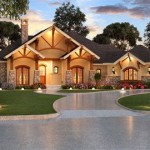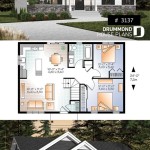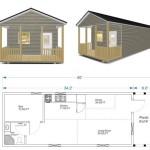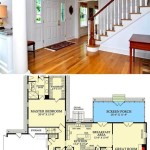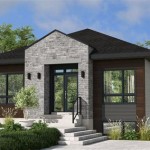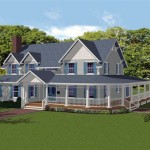Maximizing Space and Comfort: Plans for a 600 Square Foot House
The increasing interest in minimalist living and affordable housing has led to a surge in demand for well-designed small homes. A 600 square foot house presents a unique challenge and opportunity for architects and homeowners alike. Successfully planning a home of this size requires careful consideration of space utilization, functionality, and aesthetics. This article explores key considerations and strategies for creating effective and comfortable plans for a 600 square foot house.
Before diving into specific floor plans or design elements, it is crucial to understand the limitations and potential of the available space. Six hundred square feet is comparable to a large studio apartment. It requires thoughtful planning to accommodate essential living areas, including a sleeping area, bathroom, kitchen, and living space, while maintaining a sense of openness and avoiding a cramped feeling. Understanding the lifestyle of the occupants and their specific needs is paramount in developing a functional and enjoyable living environment.
The design process should start with identifying priorities. Are there specific needs that must be addressed, such as dedicated workspace, ample storage, accessibility considerations, or pet accommodations? Recognizing these requirements early allows for their integration into the design from the outset, ensuring that the final plan aligns with the homeowner's lifestyle. Furthermore, it's essential to consider local building codes and regulations, including setback requirements, height restrictions, and permitted uses. These guidelines can significantly influence the overall design and layout of the house.
Strategic Space Utilization
One of the most critical aspects of planning a 600 square foot house is maximizing the use of every square inch. This requires innovative design solutions and a focus on multi-functional spaces and furniture. Vertical space becomes particularly valuable, as it allows for the incorporation of storage solutions without sacrificing valuable floor area.
Loft areas, for example, can be an excellent way to create a separate sleeping space without occupying a large portion of the ground floor. Access to the loft can be achieved through a compact staircase or a ladder, depending on the design preferences and building code requirements. Underneath the loft, designers can incorporate storage cabinets, closet space, or even a small office nook.
Another effective strategy is to incorporate furniture that serves multiple purposes. Sofa beds are a classic example, converting a living area into a guest bedroom as needed. Similarly, expandable tables can accommodate larger gatherings while remaining compact during regular use. Hidden storage compartments within furniture pieces, such as ottomans or benches, can provide additional space for storing books, blankets, or other household items.
The kitchen is another area where careful planning is essential. Compact appliances, such as apartment-sized refrigerators and combination microwave-convection ovens, can save valuable space. Open shelving can provide easy access to frequently used items while also creating a sense of openness. Utilizing wall-mounted organizers for utensils, spices, and other kitchen essentials can free up counter space. The use of a kitchen island can function as both a food preparation area and a dining space, eliminating the need for a separate dining table.
In the bathroom, wall-mounted sinks and toilets can create a more spacious feel. A shower-tub combination can be a practical solution for smaller bathrooms, offering both bathing and showering options. Incorporating recessed shelving or niches in the shower can provide storage for toiletries without protruding into the limited space. Opting for a sliding pocket door can save significant space compared to a traditional swinging door.
Connectivity between indoor and outdoor spaces can also enhance the feeling of spaciousness. Large windows and doors can bring in natural light and fresh air, blurring the boundaries between the interior and exterior. A small patio or deck can extend the living area and provide a place for relaxation and entertainment.
Open Floor Plans vs. Defined Spaces
One of the primary decisions in designing a small house is whether to opt for an open floor plan or to create more defined spaces. Open floor plans, where the living area, kitchen, and dining area flow seamlessly into each other, can create a feeling of spaciousness and allow for better natural light distribution. However, open floor plans can also lack privacy and require careful consideration of noise control and visual clutter.
Defined spaces, on the other hand, offer more privacy and can help to create a sense of order and organization. This approach may involve using partial walls, screens, or furniture arrangements to delineate different living areas. While defined spaces can make a small house feel smaller, they can also provide a sense of comfort and intimacy.
The choice between an open floor plan and defined spaces will depend on the homeowner's preferences and lifestyle. A single person who values a sense of openness and flexibility might prefer an open floor plan. A couple who requires more privacy and distinct living areas might opt for a more defined layout. A hybrid approach, where some areas are open while others are more defined, can also be an effective solution.
Regardless of the chosen layout, it is crucial to consider the flow of movement throughout the house. Circulation paths should be clear and unobstructed, allowing for easy access to all areas. Avoid creating bottlenecks or dead-end spaces that can make the house feel cramped. The placement of doors and windows should also be carefully considered to maximize natural light and ventilation while minimizing wasted space.
Color palettes also play a significant role in the perception of space. Lighter colors tend to make a room feel larger and more airy, while darker colors can make it feel smaller and more intimate. Using a consistent color scheme throughout the house can create a sense of unity and flow. Strategic use of accent colors can add visual interest and personality without overwhelming the space.
Lighting is another crucial element in creating a comfortable and inviting atmosphere. Natural light should be maximized through the use of large windows and skylights. Artificial lighting should be carefully planned to provide adequate illumination for different activities. Recessed lighting, track lighting, and strategically placed lamps can create a layered lighting scheme that enhances the overall ambiance of the house.
Incorporating Storage Solutions
Storage is often a challenge in small houses. Efficient storage solutions are essential for maintaining a clutter-free and organized living environment. The key is to think vertically and to utilize every available nook and cranny.
Built-in storage solutions are often the most effective way to maximize space. Custom-built cabinets and shelving can be designed to fit specific needs and to utilize awkward spaces, such as under staircases or in alcoves. Wall-mounted shelves can provide ample storage without taking up valuable floor space.
Under-bed storage is another valuable option. Beds with built-in drawers or storage compartments can provide space for storing clothes, linens, or other items. Alternatively, bed risers can be used to lift the bed and create storage space underneath.
Closets should be designed with efficiency in mind. Adjustable shelving and hanging rods can allow for customization and optimization of storage space. Utilizing shelf dividers and storage bins can help to keep items organized and easily accessible.
In the kitchen, pull-out drawers and organizers can maximize cabinet space and make it easier to access items. Vertical dividers can be used to store baking sheets and cutting boards. A magnetic knife strip can free up counter space and keep knives within easy reach.
In the bathroom, medicine cabinets with adjustable shelves can provide storage for toiletries and medications. Towel bars and hooks should be strategically placed to maximize space and functionality. A shower caddy can provide storage for shampoo, conditioner, and other shower essentials.
Ultimately, effective storage solutions are about more than just finding space to store belongings. They are about creating a system that promotes organization, reduces clutter, and enhances the overall livability of the house. This careful consideration will translate into a more comfortable and functional living space within the constraints of 600 square feet.

600 Sq Ft House Plan Small Floor 1 Bed Bath 141 1140

Panther Plan 600 Sq Ft Cowboy Log Homes Small House Floor Plans Cabin One Bedroom

600 Sq Ft House Plans 2 Bedroom N Style Home Designs 20x30 2bhk Plan Duplex

Tiny Home Plan Under 600 Square Feet 560019tcd Architectural Designs House Plans

600 Sq Ft House Plan Small Floor 1 Bed Bath 141 1140

600 Square Foot Tiny House Plan 69688am Architectural Designs Plans

30x20 House 1 Bedroom Bath 600 Sq Ft Floor Plan

How Do Luxury Dream Home Designs Fit 600 Sq Foot House Plans

30x20 House 2 Bedroom 1 Bath 600 Sq Ft Floor Plan Model 2c

Roxbury Cottage Plan 600 Sq Ft Tuckaway Designs

